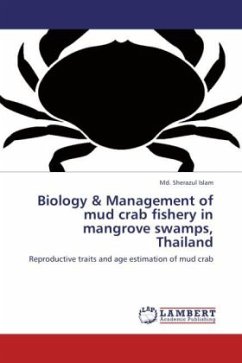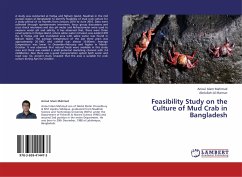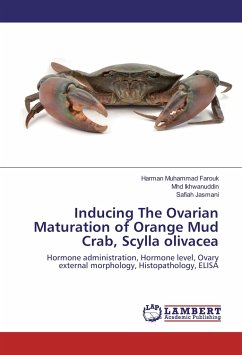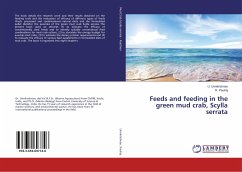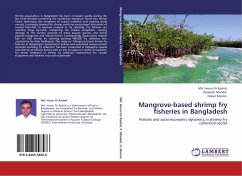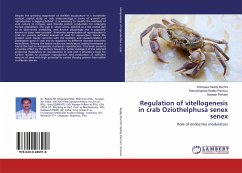Three species of mud crabs Scylla olivacea, S. paramamosain and S. serrata of the genus Scylla were recorded in the Pak Phanang mangrove swamps, Thailand. The details reproductive traits, size at sexual maturity and age class were investigated to manage the fishery. For male, gonad development was classified into three stages: 1) Immature (Spermatogonia), 2) Maturing (Spermatocytes) and 3) Mature (Spermatids & Spermatozoa). In female, five distinct ovarian development stages were showed such as proliferation (immature), previtellogenesis (developing), primary vitellogenesis (early maturation), secondary vitellogenesis (late-maturing) and Maturation. The mean maturity size in five methods employed revealed that 80% crabs were immature in the catch which indicates alarming threat to the fishery. For the first time, the age structure of wild mud crab was explored using auto fluorescent age pigment, lipofuscin which suggested that species live in the mangrove ecosystem at best of 2+ year class. It is unfolded that the regulation of mud crab fishery should be species-specific as different species mature at different size and their availability also differed in different season.
Bitte wählen Sie Ihr Anliegen aus.
Rechnungen
Retourenschein anfordern
Bestellstatus
Storno

